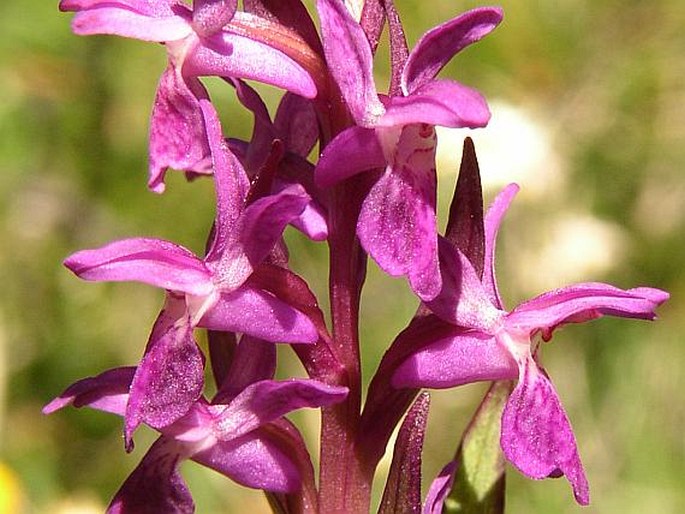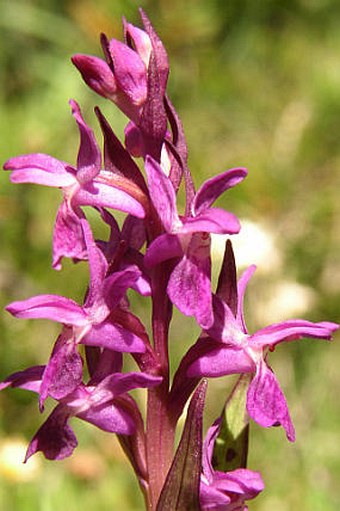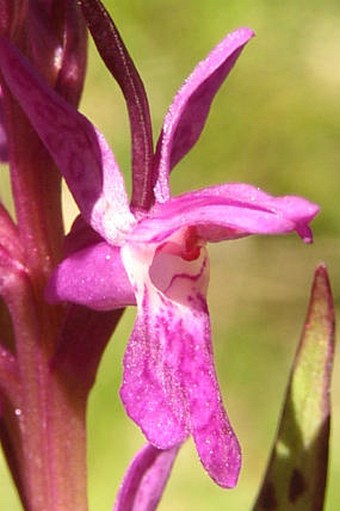Syn.: Orchis angustifolia var. lapponica Laest. ex Hartm., Dactylorhiza pseudocordigera (Neumann) Soó, Orchis lapponica (Laest. ex Hartm.) Rchb. fil., Orchis pseudocordigera Neumann, Dactylorhiza traunsteineri (Rchb.) Soó subsp. lapponica (Hartm.) Soó, Dactylorhiza cruenta (O. F. Müll.) Soó subsp. lapponica (Hartm.) E. Nelson
Family: Orchidaceae Juss.

Distribution: Scandinavian Arctic-Alpine plant species, also the Carpathians. The Lapland Marsh Orchid has several subspecies – D. l. subsp. lapponica from Scandinavia, D. l. subsp. rhaetica (on our photos) from the Alps, D. l. subsp. russowii (sometimes as D. russowii).
Ecology: It grows in moorland flushes, grassy areas, pastures and meadows, from the lowlands to the subalpine zone.
Description: A perennial herb with an erect stem, 10–30 cm cm high. The leaves (2–5) are lanceolate, spotted, 3–12 cm long. The inflorescence is cylindrical, short, only 3–5 cm long, with 3–20 dark purple to reddish-violet flowers, labellum 3-lobed, with dark spots and streaks, middle lobe is often distinctly longer than lateral ones. Flowers from June to August. The fruit is a capsule.
Threat and Protection: The Lapland Marsh Orchid is a protected plant in some countries, simultaneously is protected by the Convention on International Trade in Endangered Species of Wild Fauna and Flora (CITES).




These images were taken in Italy, the Dolomites, in the vicinity of Lago di Misurina (June 18, 2005).


